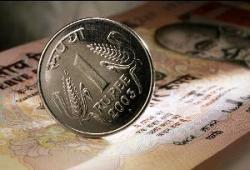 Attributing high food inflation to demand-supply mismatch and rising global commodity prices, the Reserve Bank of India said on Thursday high rate of price rise has emerged as a new risk factor.
Attributing high food inflation to demand-supply mismatch and rising global commodity prices, the Reserve Bank of India said on Thursday high rate of price rise has emerged as a new risk factor."Growth has rebounded strongly but inflationary pressures persist, driven both by domestic demand and increasing global commodity prices," RBI said in its second Financial Stability Report.
Global prices of major commodities, including crude oil, gold, iron ore, silver and farm goods like cotton have risen sharply, it said.
Crude oil price are trading at two-year high of $92 per barrel.
The report also noted that the structural demand-supply mismatches in several commodities have contributed to high domestic food price inflation.
In particular, prices of protein-rich foods like eggs, milk, pulses, meat and fish as well as fruits and wheat in India has been ruling at high levels.
The causative factors include rising income, changing consumption pattern, stagnant agricultural productivity and rising global prices, it said.
For the week ended December 18, food inflation surged to a 10-week high of 14.44 per cent driven by higher prices of vegetables, fruits and protein-rich products like milk, egg, fish and meat.
The report said upswing in food prices, particularly of sugar, cereals and edible oil at the global level is a major concern to India,
The overall inflation including manufacturing came down to 7.48 per cent in November.
Meanwhile, Finance Minister Pranab Mukherjee indicated more steps to check rising prices and pegged the overall inflation rate at 6.5 per cent by this fiscal end, a bit higher than projected earlier.
Mukherjee's estimates of year-end inflation, however, is higher than 5.5 per cent indicated by Prime Minister Manmohan Singh and 6 per cent projected by the Mid-Year Analysis of the Finance Ministry for the current fiscal.
The monetary policy response has been calibrated based on domestic growth-inflation scenario and global developments, the report said, adding, since October 2009, the Reserve Bank of India has cumulatively raised the cash reserve ratio by 100 basis points, and the repo and reverse repo rates under liquidity adjustment facility by 150 and 200 basis points, respectively.








 © 2025
© 2025